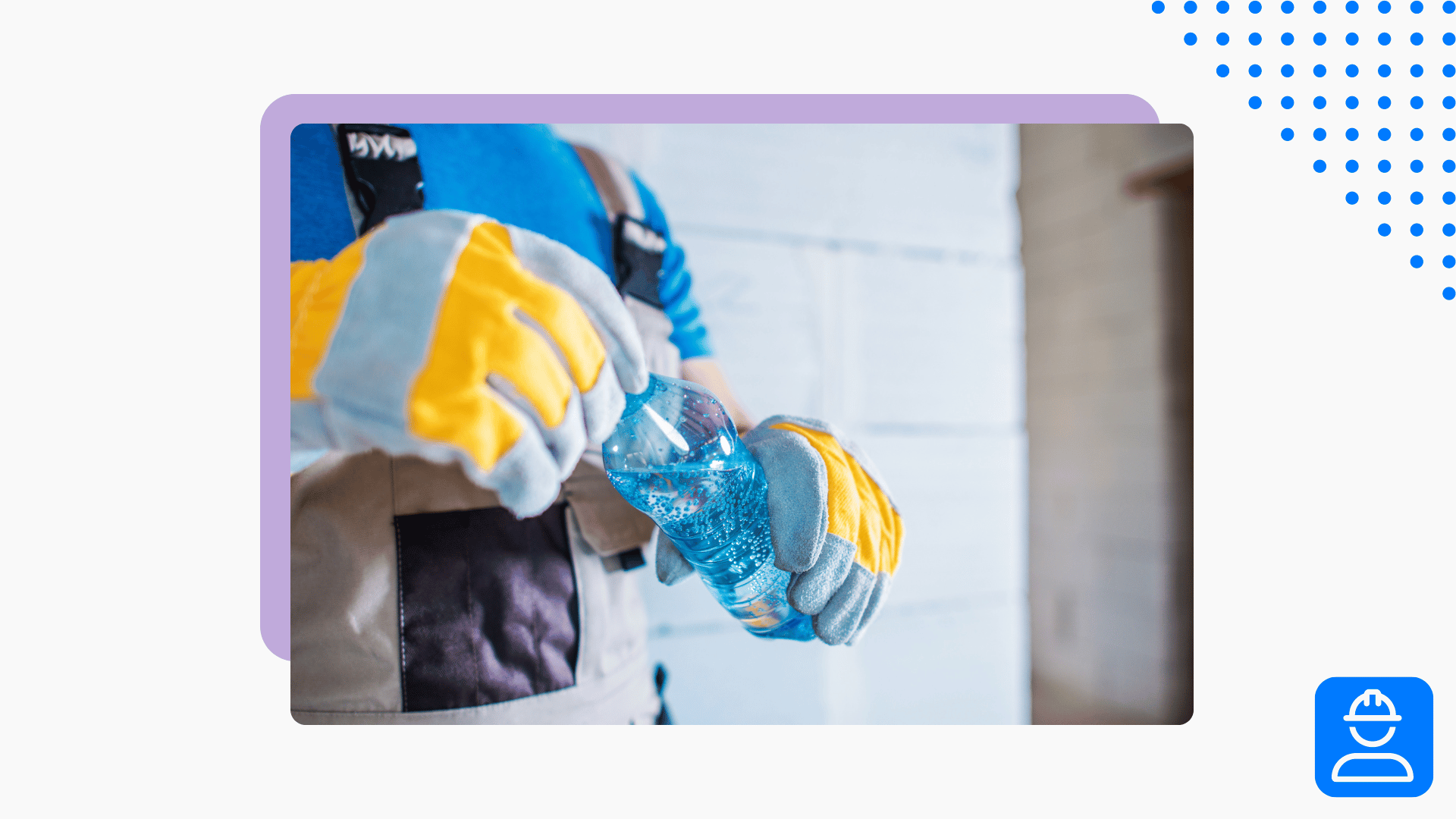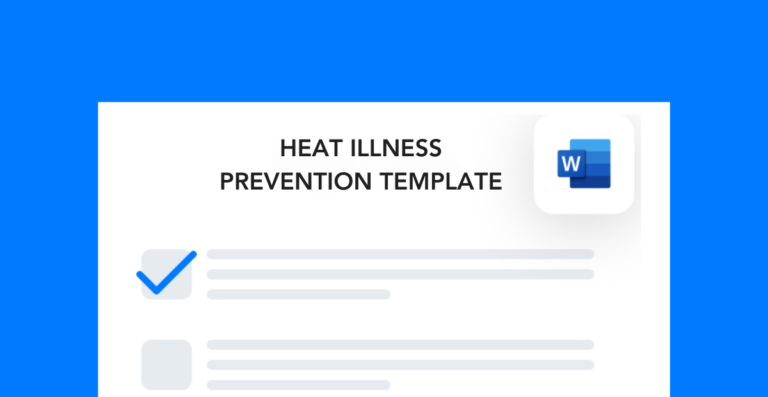Although dehydration is more of a risk in the summer when temperatures climb, it can happen year-round. Whether your team works out in the field or a facility with air conditioning, staying hydrated should be a priority for everyone. Cover the points in this dehydration toolbox talk to make sure your team drinks enough throughout the day.
Free template!
Download this free template to create a site-specific heat illness prevention plan, which can complement your dehydration toolbox talk strategy.
Dehydration toolbox talk overview
In this toolbox talk, we’ll talk about:
- Causes of dehydration
- Common symptoms
- Ways to prevent dehydration by utilizing this toolbox talk
Personal safety is key to protecting yourself from health risks at work. Remember: no one will be able to protect you from dehydration better than you if you follow the advice shared in toolbox talks.
What causes dehydration?
At work, the most common causes of dehydration are not drinking enough water and excessive sweating. The more strenuous your work activities, the more susceptible you are to dehydration symptoms like muscle cramps, dizziness, and fatigue, often highlighted during a dehydration toolbox talk.
These symptoms can lead to more serious issues like heat exhaustion or stroke. More often than not, distractions are the number one reason why people don’t stay hydrated in the workplace. It’s important to drink water regularly and make it a habit so that regardless of how busy the day gets, you’re never at risk of dehydration.
Toolbox talk question: What does dehydration look like?
You may be dehydrated if:
- Your mouth is very dry.
- You’re not peeing as much as normal.
- You feel excessively thirsty.
- Your heartbeat is higher than normal.
- You’re having trouble breathing.
- You have cramps or feel dizzy.
When you start to notice any of these symptoms, you should get some water and give yourself a few minutes to rest. This is especially true when working in hot conditions. The longer you go without water, the more dehydrated you get. In severe cases, this can lead to hospitalization or worse, so don’t downplay the importance of getting enough fluids, as often discussed during a dehydration toolbox talk.
What can you do to prevent dehydration?
A good rule of thumb is to drink at least 8 ounces of water each hour. When working in hot weather, you should drink even more. It’s okay to have some flavored drinks but try to avoid ones that have too much sugar or caffeine. This can cause headaches and increase your chances of getting dehydrated.
Here are some more tips to follow, especially as part of a dehydration toolbox talk:
- Keep a backup water bottle around in case you misplace your primary one.
- In hot temperatures, drink electrolytes to replace the ones you sweat out.
- Don’t wait to drink water until you’re thirsty; by then, you’re already dehydrated.
- Wear appropriate clothing to prevent overheating when working outside.
- Take regular breaks to replenish your water bottle and regulate your heart rate.
- Avoid big bursts of energy and instead work at a steady pace.
- Move into the shade if you’re starting to feel the symptoms of heat stress.
Avoiding dehydration is all about preventative strategies as seen in this toolbox talk. Get in the habit of drinking water and taking breaks often, which is highly emphasized in any dehydration toolbox talk, and you’ll lower your risks significantly.




